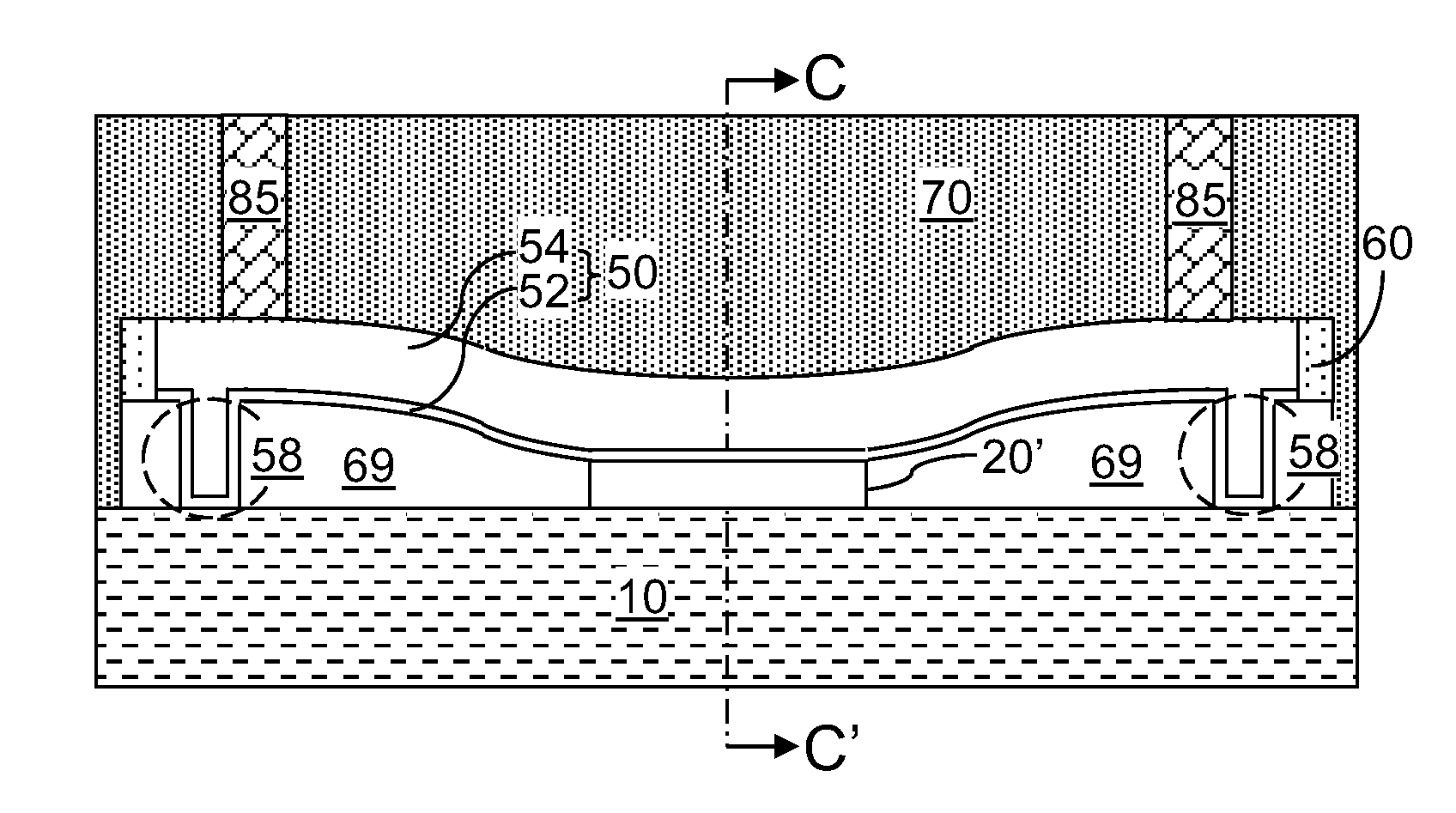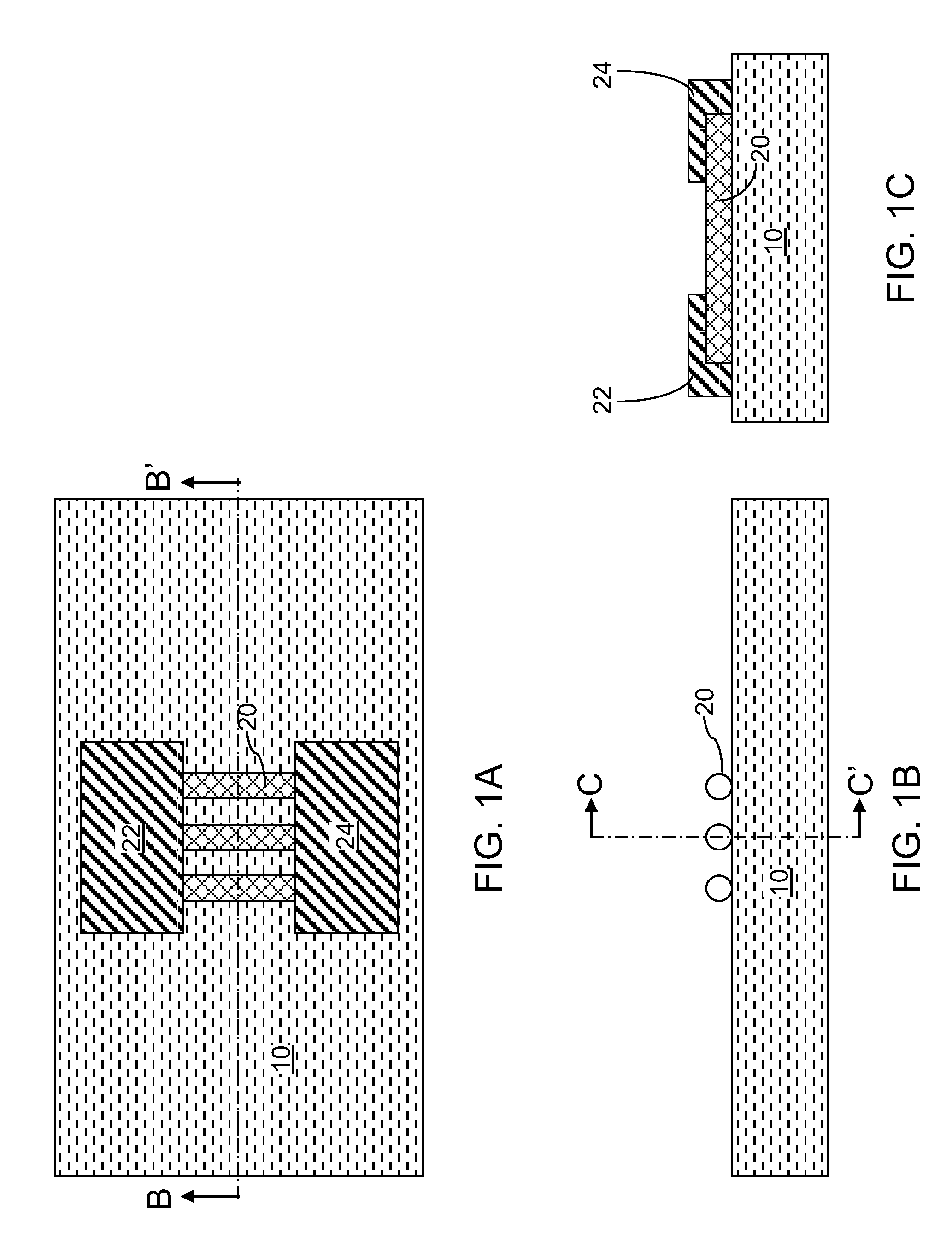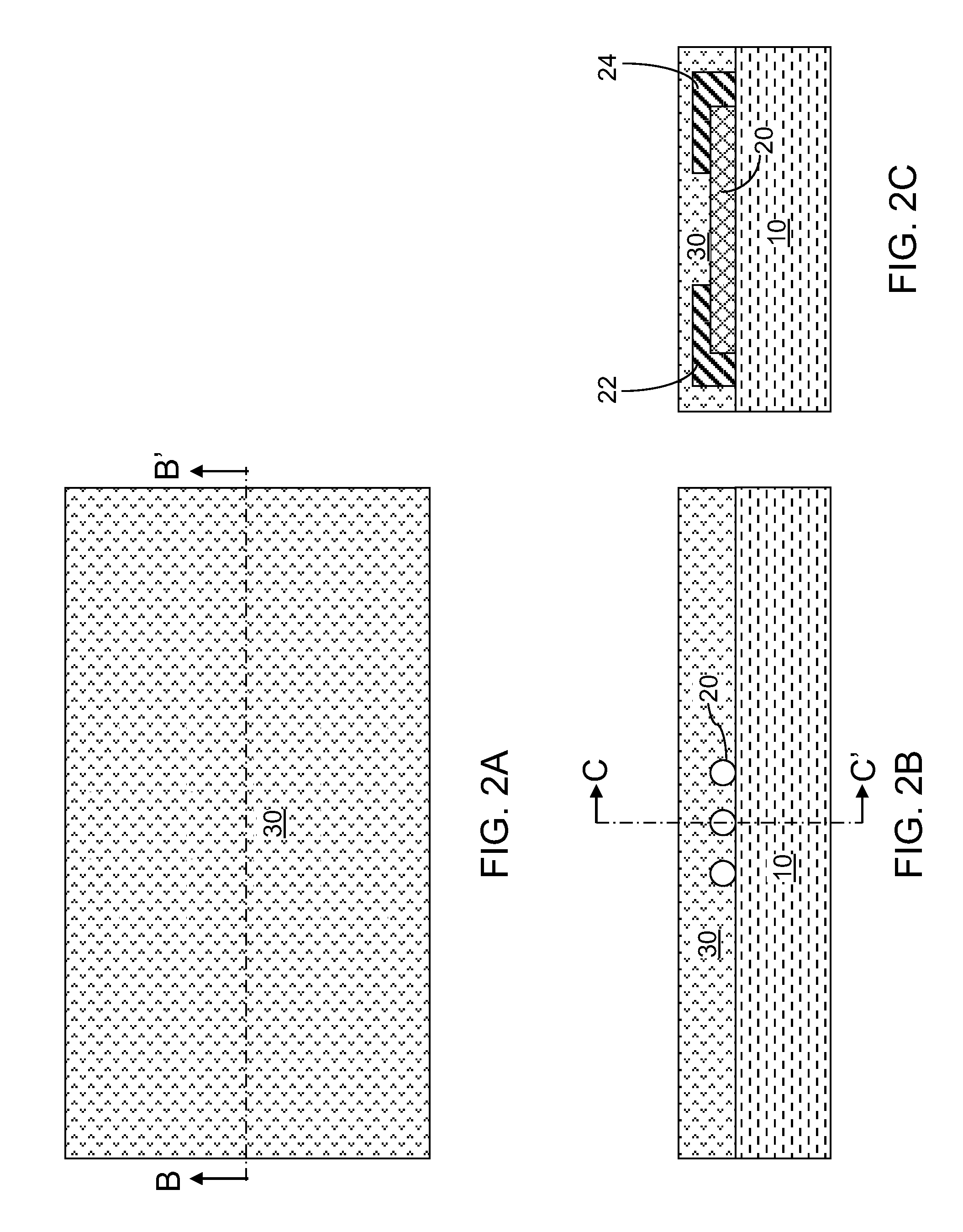Collapsable gate for deposited nanostructures
a nanostructure, collapsable technology, applied in the direction of transistors, electrical devices, semiconductor devices, etc., can solve the problems of reducing overly thick gate dielectric films, and affecting the quality of channel materials
- Summary
- Abstract
- Description
- Claims
- Application Information
AI Technical Summary
Benefits of technology
Problems solved by technology
Method used
Image
Examples
Embodiment Construction
[0034]As stated above, the present disclosure relates to devices including at least one 2-dimensional carbon lattice structure, and particularly to field effect transistors including at least one 2-dimensional carbon lattice structure, and methods of manufacturing the same, which are now described in detail with accompanying figures. Like and corresponding elements mentioned herein and illustrated in the drawings are referred to by like reference numerals. The drawings are not necessarily drawn to scale.
[0035]Referring to FIGS. 1A-1C, a first exemplary structure according to a first embodiment of the present disclosure includes an insulator layer 10, which can be a substrate that stands alone or can be an upper portion of a substrate including another substrate portion (not shown) located underneath the insulator layer 10. The insulator layer 10 can be, for example, a silicon oxide layer, a silicon nitride layer, an aluminum oxide layer, or any other dielectric material layer.
[0036]...
PUM
| Property | Measurement | Unit |
|---|---|---|
| thickness | aaaaa | aaaaa |
| diameters | aaaaa | aaaaa |
| thicknesses | aaaaa | aaaaa |
Abstract
Description
Claims
Application Information
 Login to View More
Login to View More - R&D
- Intellectual Property
- Life Sciences
- Materials
- Tech Scout
- Unparalleled Data Quality
- Higher Quality Content
- 60% Fewer Hallucinations
Browse by: Latest US Patents, China's latest patents, Technical Efficacy Thesaurus, Application Domain, Technology Topic, Popular Technical Reports.
© 2025 PatSnap. All rights reserved.Legal|Privacy policy|Modern Slavery Act Transparency Statement|Sitemap|About US| Contact US: help@patsnap.com



